Aerobics/dancing: Table
Archery: Table
Badminton: Table
Basketball: Table
Billard: Table
Boccia: Table
Boules: Table
Bowling: Table
Bowls: Table
Boxing: Table
Climbing: Table
Cricket: Table
Curling: Table
Cycling: Table
Dancing: Table
Darts: Table
Fencing: Table
Fistball: Table
Floorball: Table
Gymnastics: Table
Gymnastics (rhythmic): Table
Handball: Table
Hockey: Table
Photometric requirements according to international sports associations
Horse riding:Table
Ice hockey/figure skating: Table
Judo: Table
Karate/Keno: Table
Martial arts: Table
Netball: Table
Pétanque u. Boules: Table
Racketball: Table
Roller-skating: Table
School sports: Table
Shooting : Table
Skittles:Table
Snooker: Table
Soccer: Table
Speed skating:Table
Squash: Table
Swimming: Table
Table tennis: Table
Tennis: Table
Track and field: Table
Volleyball: Table
Weightlifting: Table
Wrestling: Table
For many sports, corresponding international sports associations and television broadcasters have also developed sports facility lighting requirements. The table contains international associations which in some cases need to be consulted concerning special facility lighting requirements.
For example, the International Table Tennis Federation requires at least 1000 lx on the field of play in the box measuring 4 m · 7 m for world championships and Olympic tournaments, and at least 500 lx for the remaining playing space. For other competitions, 600 lx and 400 lx in the playing space respectively must be provided.
The international association F.I.B.A. requires an average horizontal illuminance of 1.500 lx at a height of 1,5 m above the playing area for all level 1 and 2 basketball tournaments.
The International Ice Hockey Federation I.I.H.F. only requires the playing area to be illuminated sufficiently for players, referees and spectators to comfortably follow the course of the game.
The Federation Internationale de Volleyball F.I.V.B requires a horizontal illuminance of 1.500 lx at a height of 1,0 m above the floor for competitions and 500 lx for "warm-up areas".

Table 3.80
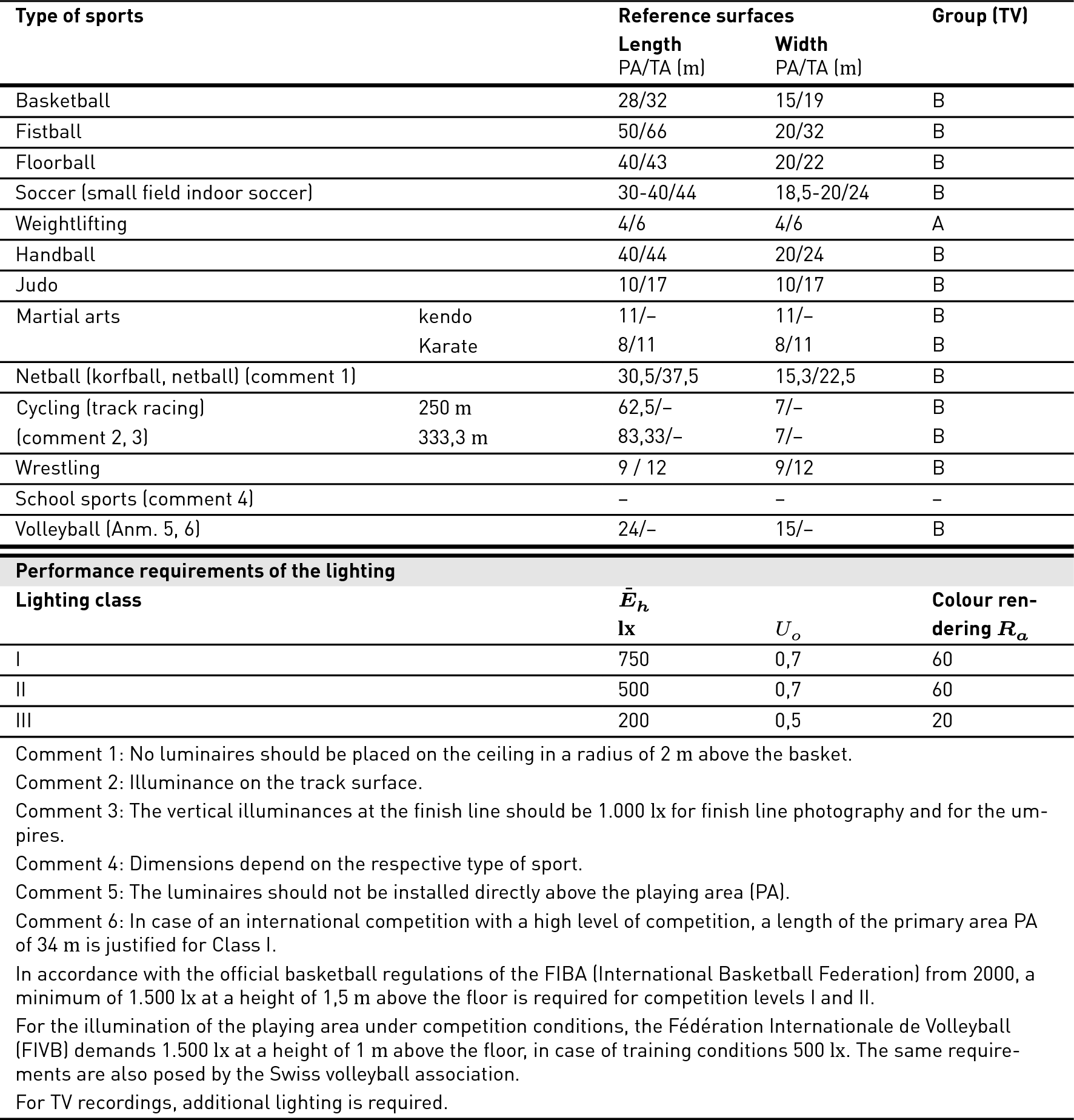
Table 3.81

Table 3.82
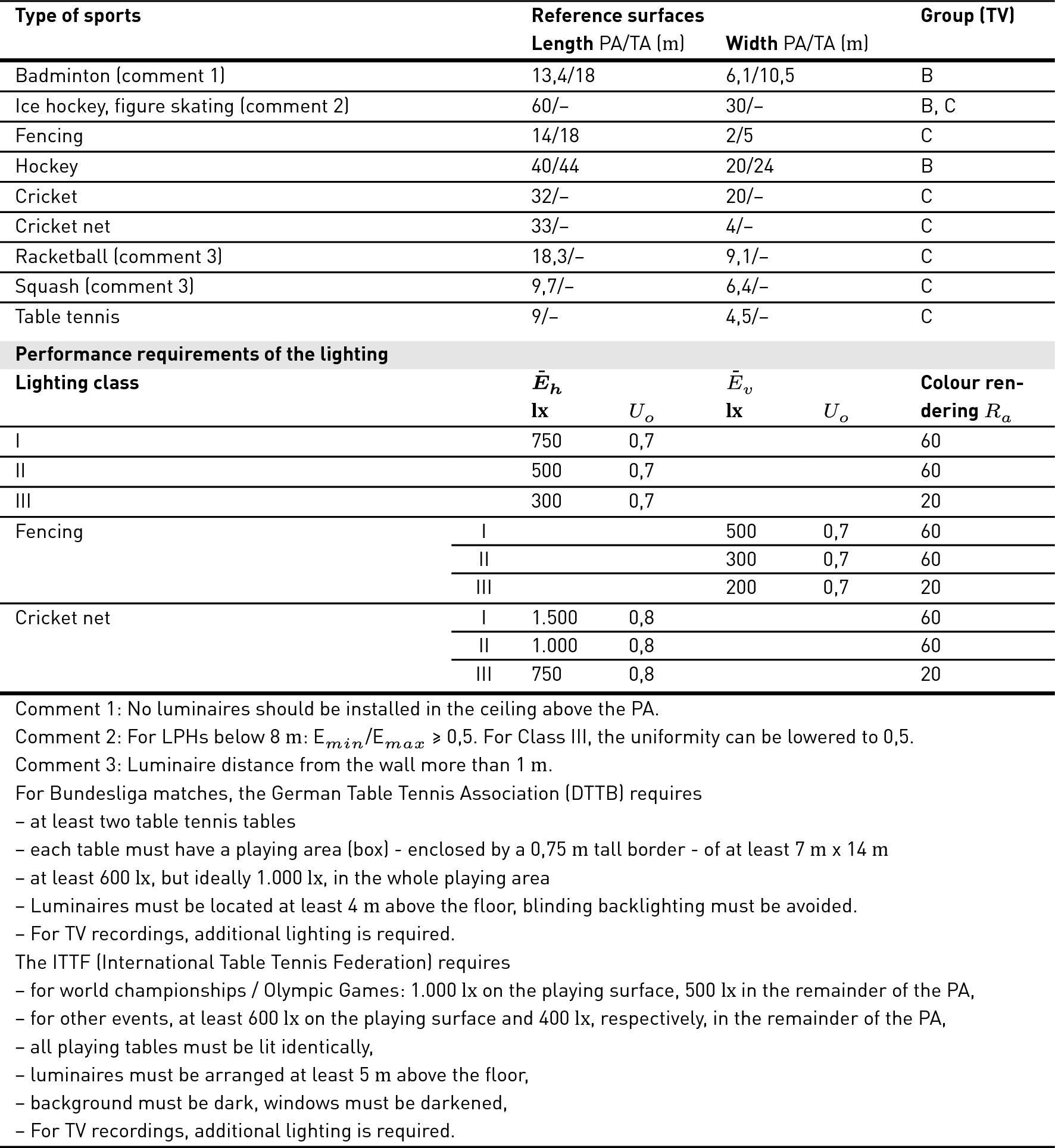
Table 3.83

Table 3.84
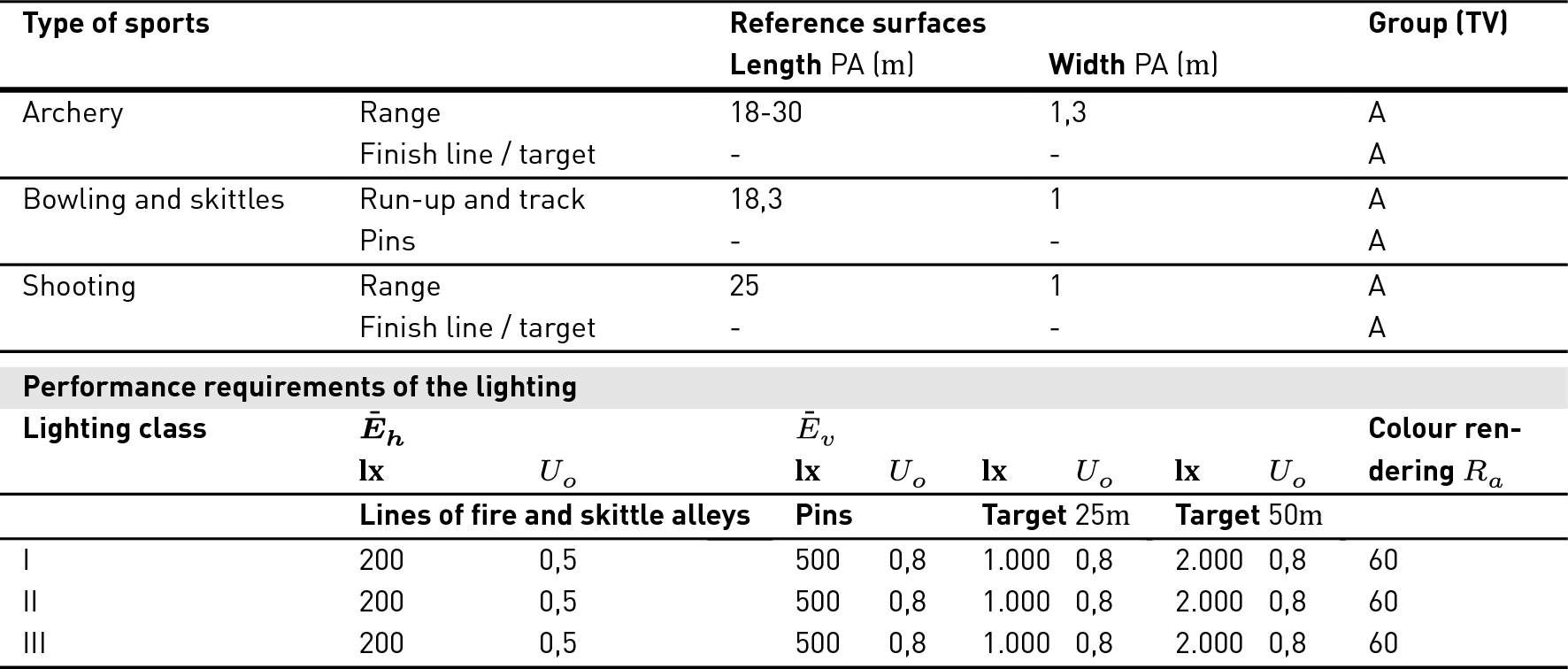
Table 3.85
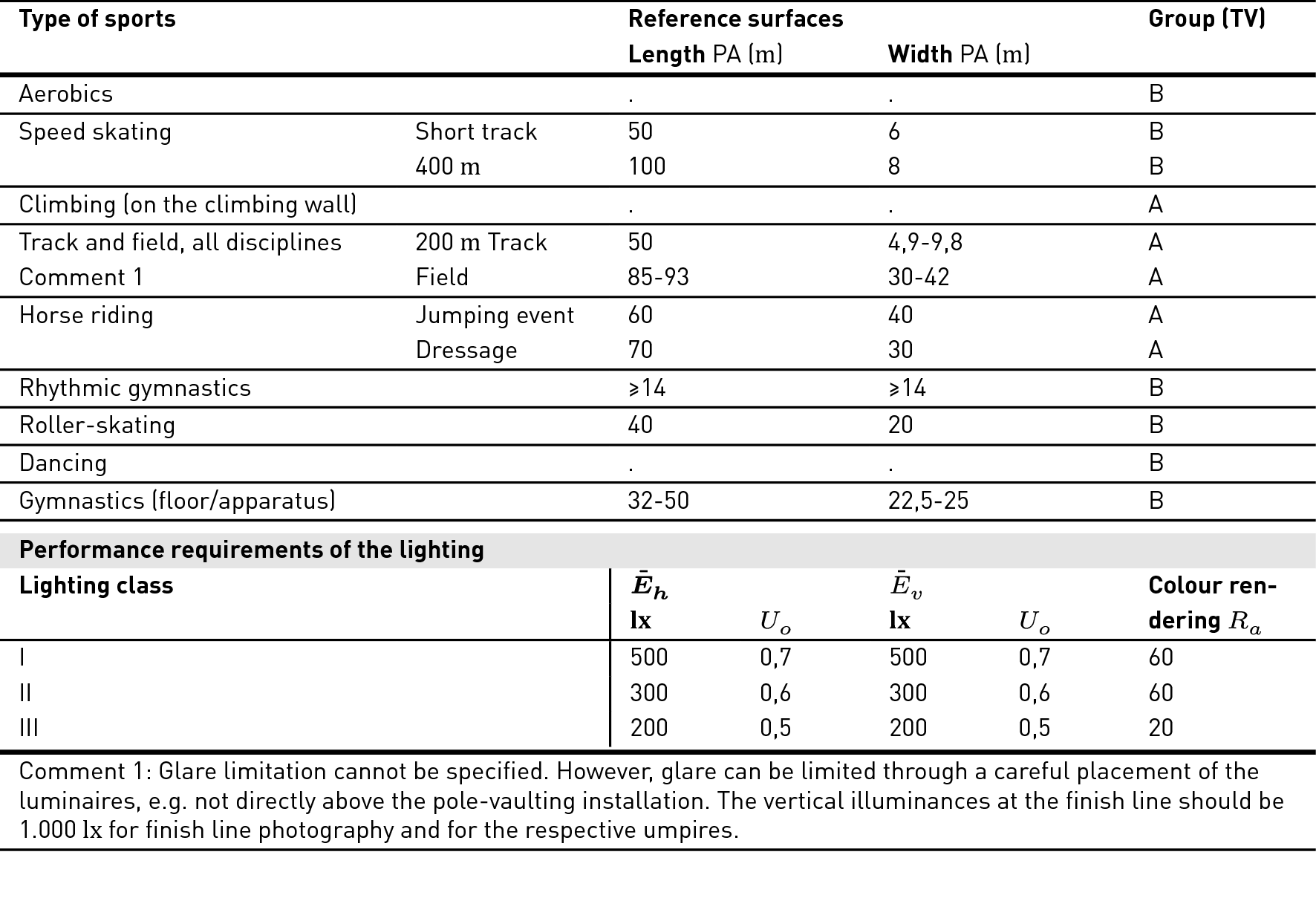
Table 3.86
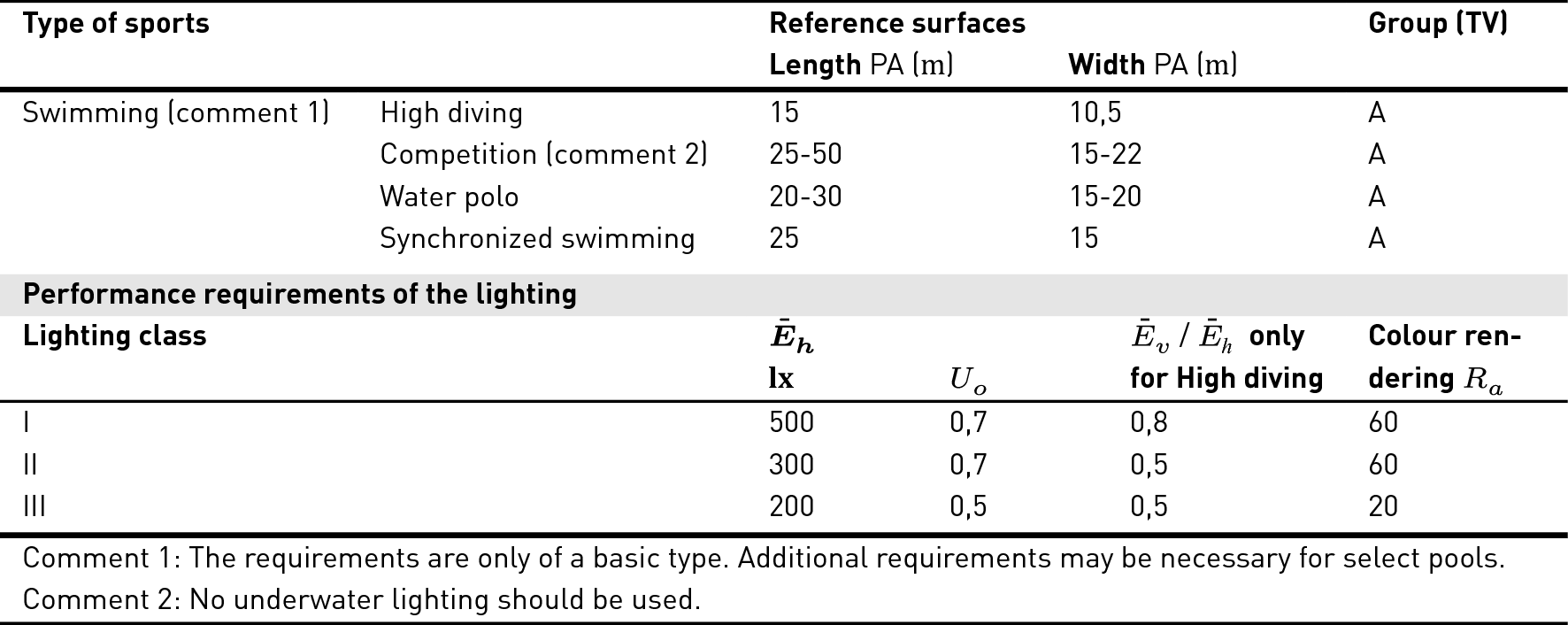
Table 3.87

Table 3.88
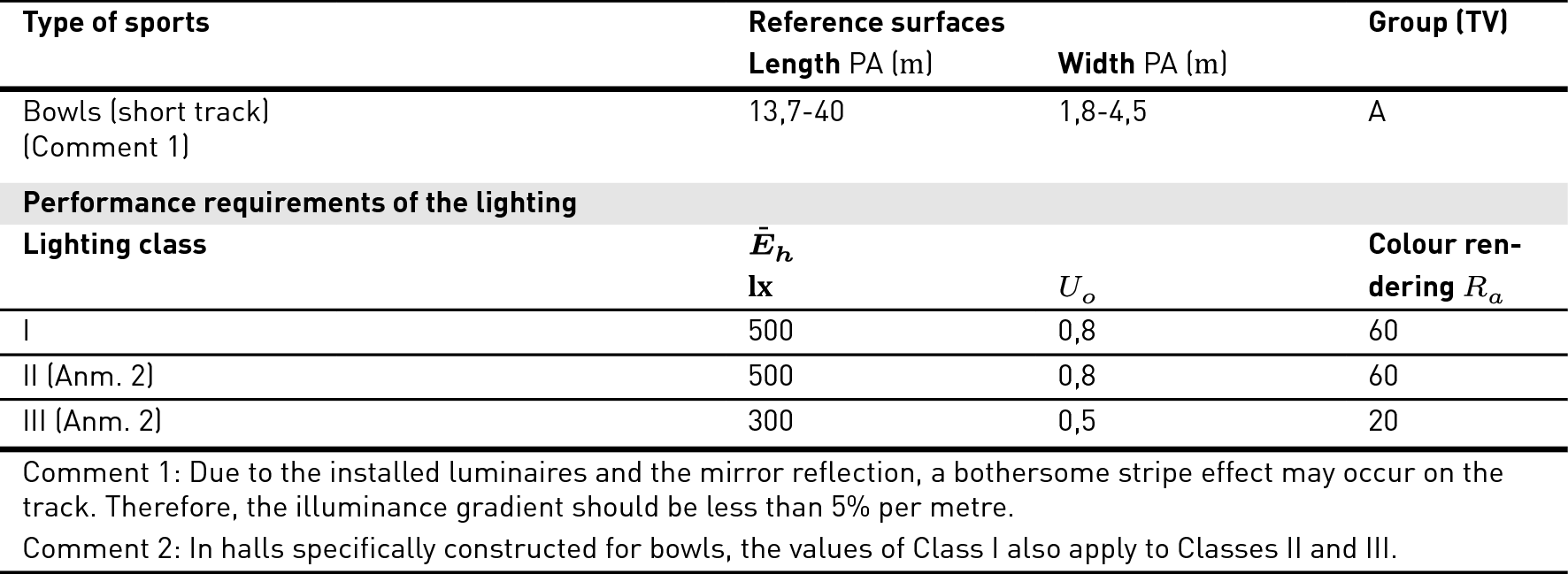
Table 3.89

Table 3.90
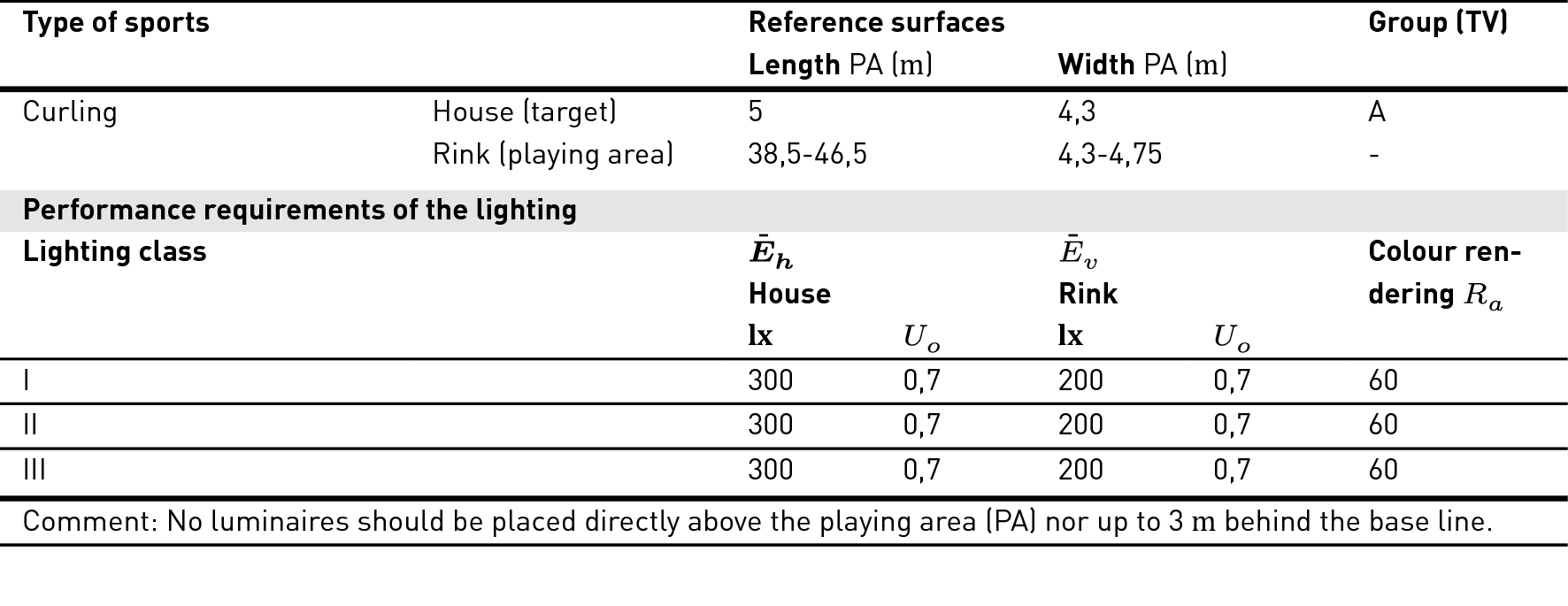
Table 3.91